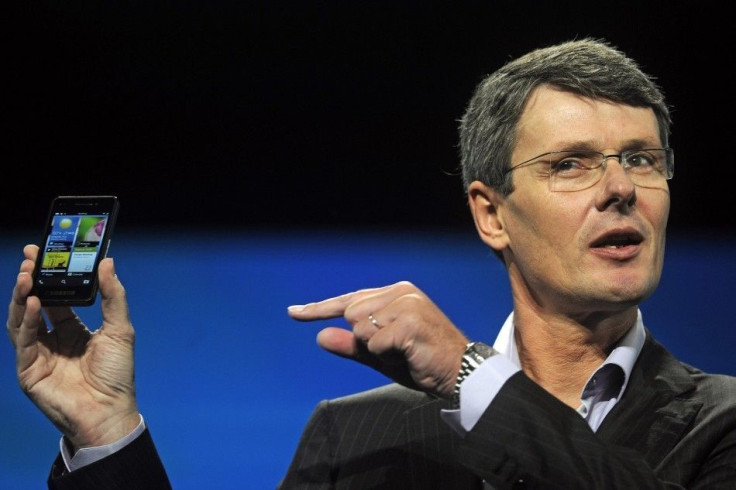RIM’s Bet-The-Company Day; BlackBerry 10 Finally Available

After two years of waiting, a management shakeup and near collapse, BlackBerry developer Research in Motion (NASDAQ:RIMM), Wednesday, is finally ready to ship the game-changing BlackBerry 10. The Canadian company’s survival depends on it.
A year after taking over at the Waterloo, Ontario, smartphone maker for enterprise customers in the developed world and consumers in emerging markets, CEO Thorsten Heins, 55, a German-born physicist, formally introduced two models of BlackBerry 10 at a New York press event.
They are the Z10 and the Q10, Heins said. The Z10 will sell for $199.99 with a two-year contract. The price for Q10 wasn't announced.
Among the big changes: the company will formally change its name to BlackBerry, "We will be known just as BlackBerry from today on," Heins announced. The move has already been ratified by the board of directors.
One big drawback: the new phone won't be available until mid-March.
RIM long ago signed up its principal mobile carriers, headed by AT&T Inc. (NYSE:T), the No. 1 telecommunications carrier, and the Verizon Wireless unit of Verizon Communications Inc. (NYSE:VZ), the No. 2 telecommunications carrier, to carry them, along with most of its vendors worldwide.
Heins hopes that RIM’s 79 million subscribers will order the new model and that enterprise customers, such as the Department of Homeland Security, will upgrade the servers that provide new services and software. Indeed, BlackBerry 10 uses QNX software, acquired in 2010 from Harman International Inc. (NYSE:HAR), for the upgrade.
Rival phones running iOS from Apple Inc. (NASDAQ:AAPL), the most valuable technology company, and Android OS from Google Inc. (NASDAQ:GOOG), the No. 1 search engine, control about 90 percent of the market, market researchers reckoned in the third quarter. RIM’s share was around 4 percent.
In the fourth quarter, propelled by sales of the iPhone 5 and two new Galaxy models from Samsung Electronics Corp. (KRX:005930), the new two dominant OS types had 92 percent share, researcher Strategy Analytics said this week.
RIM showed the BlackBerry 10, which will resemble most current smartphones, as well as a hybrid version with a keyboard traditional to BlackBerry 7. The company has said the new software will consolidate incoming messages from customers sites such as Twitter, LinkedIn Corp. (NYSE:LNKD)and Facebook (NASDAQ:FB), the No. 1 social networking website, via what it calls BlackBerry Hub.
Investors have bid up RIM shares since last summer, when Heins won a vote of confidence from shareholders. They’ve more than doubled.
During the Wednesday product launch, the shares started to fall and closed down 12 percent at $13.78, down $1.88. The drop may be attributable to the delay in shipments, which won't have much impact on the current fourth quarter, which ends March 2.
The overall share gains since July, coupled with RIM’s report of a third-quarter surprise profit, have inflated the value of the company to $7.62 billion, still a far cry from the diminished value of Apple’s $430.4 billion.
© Copyright IBTimes 2024. All rights reserved.












